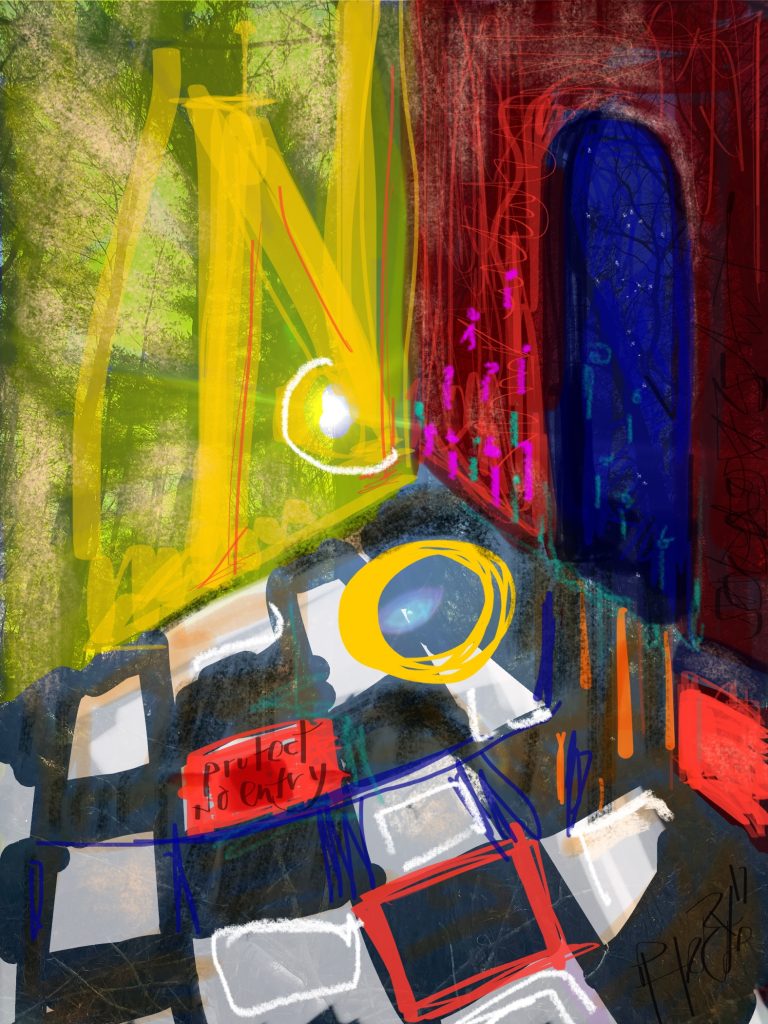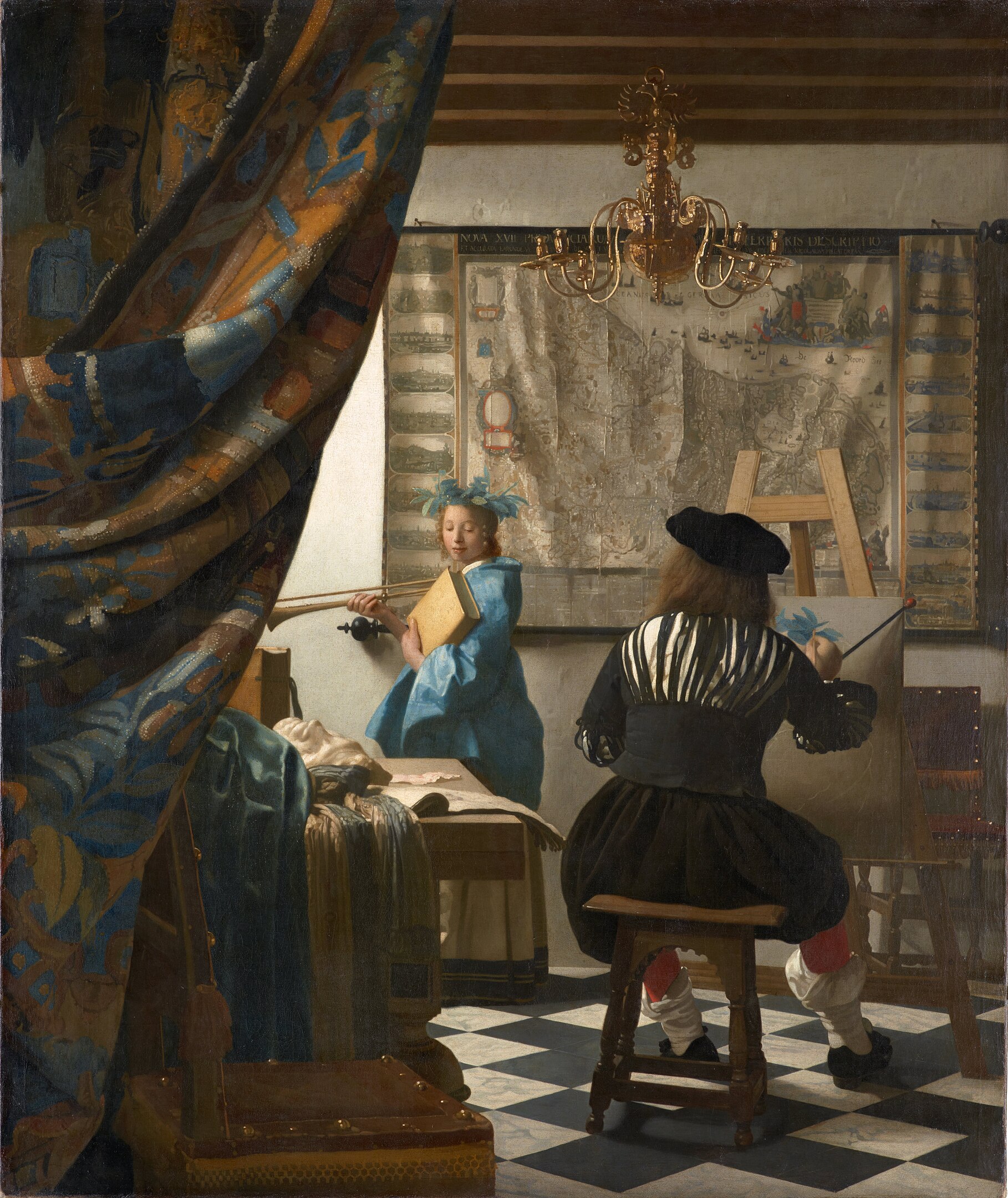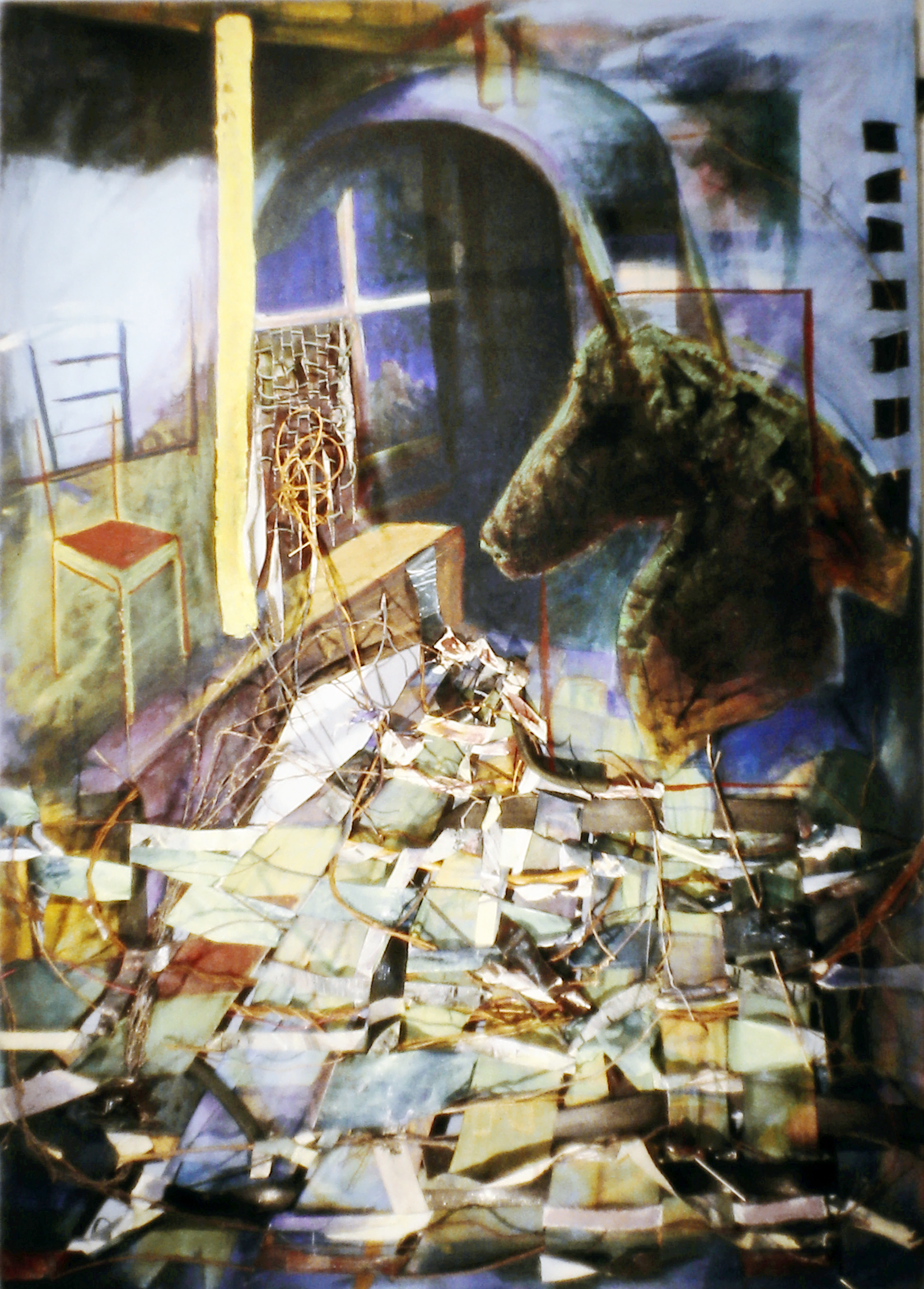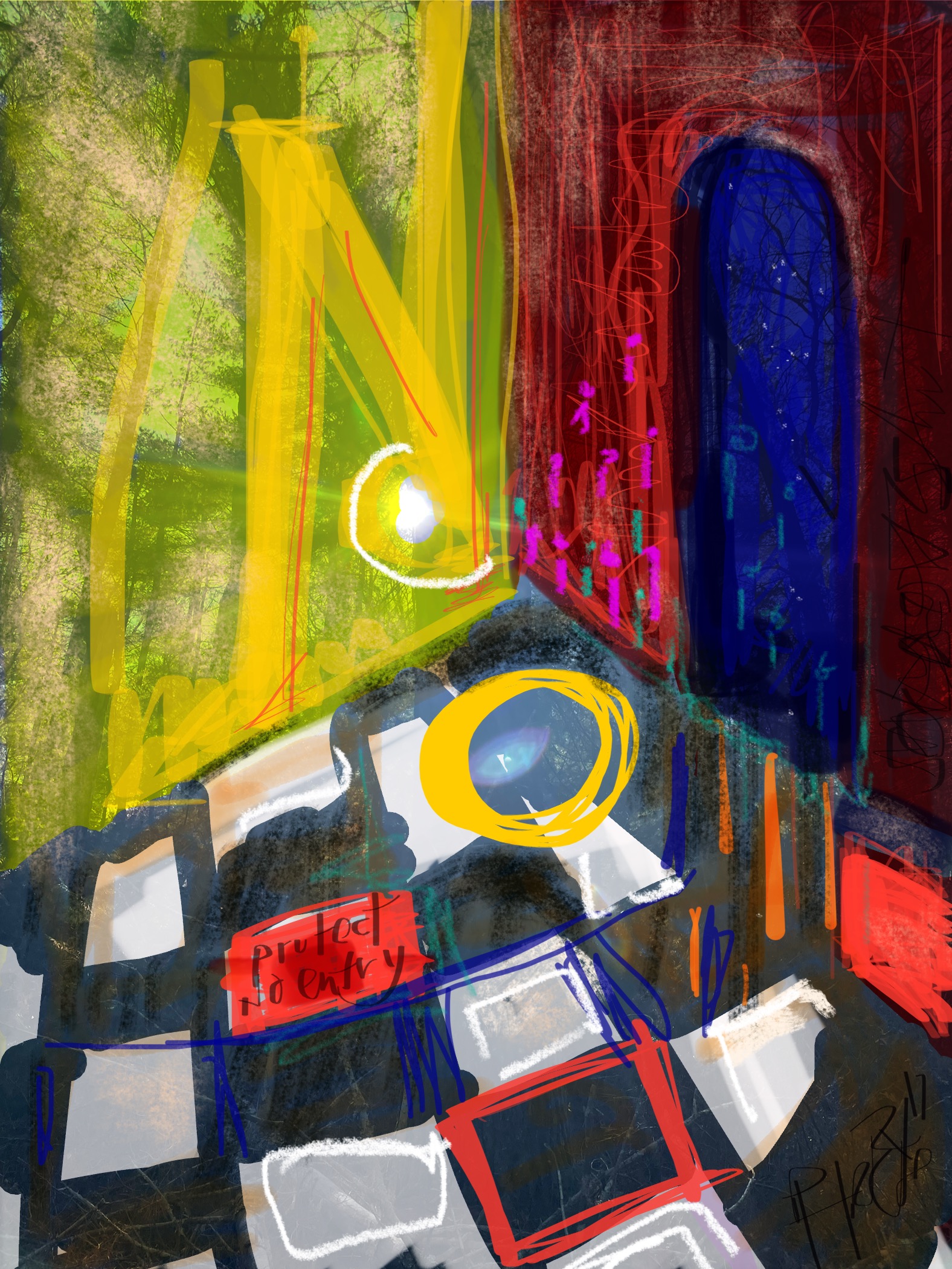On the checkerboard of life, the right thing is finding its way to you, as you are to it.
~ My Mom
Artwork: No Title
by the author 2024

I love Johannes Vermeer. I’m not going to write too much about him here, but you need to look into his art on your own, especially the piece The Art of Painting and the fascinating map of the Netherlands that is memorialized & archived within the painting better than in historical record. Go figure, art that includes references to a “scientific” art1 winds up surviving longer, but that’s another conversation about cartography* and what lasts longest, for another day.
I’ve paraphrased my mom above. I can’t remember the precise circumstance she said it first. Maybe while wondering about my next dog after the loss of a beloved pet. Maybe my love life. Hard to say, but I do know that our future people, those we are meant to engage with in meaningful ways, are on their way to us, as we are to them.
Because I’m simultaneously (with every post) digitally and intentionally weaving together pieces of my life, I’m going to also mention that since college, I’ve been more than a bit in love with checkerboards in art, and visually represented many of my own. As a working note, when I went into my WordPress media library, I discovered I’d uploaded the below public domain image of Vermeer’s great masterpiece at least 3 times. Not a surprise: this painting has layers of meaning. Literally, endless discoveries.
Everyday checkerboards and reaching your goals
If you feel as if the next right thing for you is unclear, and you don’t necessarily wish to aim at someone else’s desires or goals for you, or for a “king me” like in actual checkers, then mapping is a great way to visualize your journey, and perhaps will help you feel your movement toward your destination. The exactly perfect destination for you.
Art Exercise
Draw or print a checkerboard pattern of any size. Color it or paste in black squares where needed. Cut it up and paste shapes down upon another piece of paper or material: overlays and new angles are fine! Draw lines and paste magazine cuttings on top of white squares, maybe draw lines and symbols in between your shapes, until you like the totality of what you see.
To wrap today, because I need to drive to the mall to meet a friend for a walk (it’s rainy here and she’s not a hiker): I really love checkerboards, art and art history and maps. There’s so much to discover about the relationship between art history and art-making2, and oneself over time, all intertwined. This is a solidly happy checkerboard path for me, playing out today, while putting up my art and Vermeer’s together. And inviting you to see the through lines of your own artwork too.
some checkerboards



With love and respect,
Elizabeth
FOOTNOTES & SUB-SUBTEXT 😉
- I honestly feel like the earliest cartographers must have mentally hung out in the stratosphere, looking “down” at land and the earth. They kind of had to position themselves mentally “out there” to achieve the best results and work with their data and measurements, which came from far flung places, recorded likely in totally different ways by captains, and walkers, and themselves in different ways.
A research project I’d like to do, is about the earliest globe-making cartographers– in relationship with art-making and finessing techniques when data was incomplete. How did they do it? ↩︎ - Read Art Dilettante for another reference to this very topic. ↩︎
